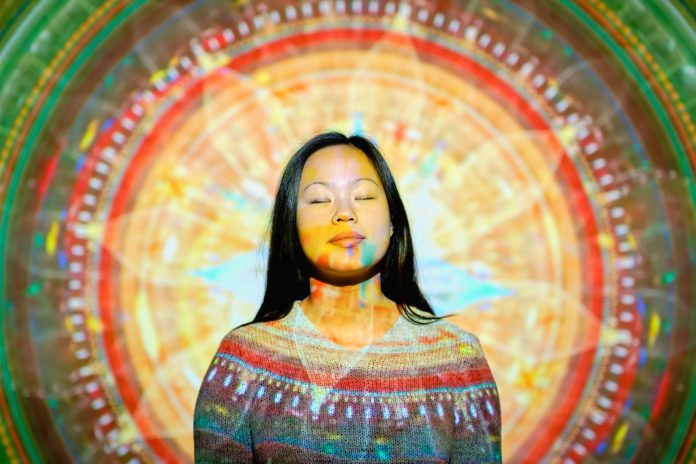Is the Aura Real?
The Aura is real, but how people interpret it is different for all people. For example, some think it is a vibe, while others consider it an energy.
It is unclear if the energy can manifest the spiritual and physical body; not everyone believes that the aura is part of our state of being.
One way to think of the aura is as the energy that people around you give off. For example, some people make you nervous or excited, and others make you relaxed. The aura is the reaction to this energy.
What are Auras?
People radiate low levels of electricity, which is the electromagnetic field. The ancient medical system believed that this energy is passed in up to seven different layers, and each layer works with the different parts of your spiritual, mental, physical, and emotional health. It is thought that the layers can influence the other layers and can affect your health.
Are Auras Vibes?
Auras are like vibes because they tell you something about what is happening around you. For example, if you are angry, upset, or excited, you know these feelings without even saying anything.
You are tapping in on what people around you are feeling, which is a sense of a vibe telling us what is going on.
Does Everyone Have an Aura?
Everything that is living has an aura around them. Sometimes, even plants can have an energy field around them. However, some believe that the human energy field is more complex, and that is because people are more evolved than other things.
It is like our aura is always broadcasting what is going on around us.
What Does the Aura Look Like?
Some people feel that the aura can differ depending on what is happening. Some believe that a camera can pick up this color of energy, and one type of photography called aural photography can capture the circle that is egg-shaped around a body, which is the aura.
Some artists believe that the aura is shaped like a halo and that it surrounds the body physically.
How Can You See the Aura?
Cameras can capture the aura, but if you don’t have this type of equipment, you might not always be able to see the aura. Some people say that they can see it when they squint and look in a mirror, but this takes practice. So instead, try to focus on it and look in your peripheral vision to see one.
Some people see the aura as a fuzzy white light that is a couple of inches thick, but it can take time and attention to know what you are looking at.
Can You See Someone Else’s Aura?
If you are able to see your own aura, you might be able to meditate and know how to focus enough to see someone else’s. Of course, you don’t have control over the elements that another person has, but some people have a more prominent aura, and this could make it easier to see.
Why Are Aura’s Different Colors?
A different color represents each layer of the aura, and this is how we connect emotionally and spiritually to the aura.
For example, some layers might be brighter because they have more energy, while others are dull based on how stressed or anxious we are.
Not having color isn’t concerning because the aura changes over time and can be any color it wants to be at that time.
Aura Colors
Here is a guideline of the different colors and what they mean:
- Red-energetic and strong-willed.
- Orange-thoughtful and full of adventure.
- Yellow-relaxed and friendly.
- Blue-spiritual, a free-thinking person.
- Indigo-Connected, kind, and curious.
- Violet-Smart, independent and wise.
What Do the Colored Layers Mean?
Each layer is part of the chakra, and so they are the energy within the body. Some layers will be more dominant, and others will be less dominant.
Red is said to be from the physical layer of the chakra and can be seen between the tailbone and the pelvic bone.
Orange is said to reflect from the sacral layer by the naval.
Yellow reflects from the emotional.


The concept that everyone and everything living has an aura around them is an intriguing one. Understanding how these energy fields interact with our emotions and health could provide new insights into holistic wellness practices, though scientific validation is crucial.
The article provides an interesting overview of the concept of auras, connecting them to both spiritual and physical realms. While it is an intriguing idea, the scientific basis for auras remains questionable, and more empirical research is needed to substantiate these claims.
I agree, Jessie. It would be fascinating to see more scientific studies that explore the electromagnetic fields around living beings to understand if auras can be quantified in a meaningful way.
The explanation of auras and how they might be perceived in different colors is thought-provoking. The concept of layers affecting one’s health is reminiscent of traditional Eastern medicine. However, it would be helpful to have more clarity on how these ideas correlate with modern medical understanding.
The notion that auras can be captured through photography is quite intriguing. Aural photography could open up new avenues for exploring human energy fields, but it is essential to critically evaluate the methodologies and validate the findings through rigorous scientific scrutiny.
The correlation between aura colors and emotional states as laid out in the article is quite detailed. While it offers a structured way to think about emotional and spiritual energies, the lack of empirical evidence makes it challenging to accept this as a universal truth.